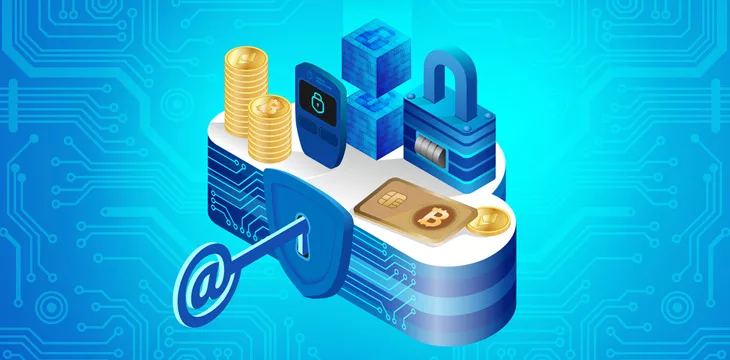|
Getting your Trinity Audio player ready...
|
This article was first published on Dr. Craig Wright’s blog, and we republished with permission from the author.
This Annotated Bibliography has centered on examining open-source software, focusing mainly on its aspects of trust, security, and the associated legal rights. It started with an emphasis on the trust fostered by open-source development, primarily because of its inherent transparency, which allows for collective inspection and enhancement of the source code (Ghosh et al., 2005). It was highlighted that such transparency is often absent in closed-source or proprietary software, resulting in potential trust issues (Aksulu et al., 2010).
Security advantages of open source software were discussed, emphasizing that the open nature of the source code allows for wide-scale auditing and bug detection, hence improving the software’s security. This concept was grounded in “Linus’s Law,” suggesting that the more individuals review a code, the more likely problems are identified and rectified promptly (Leicht, 2018). Conversely, the auditing of closed-source software is challenged by its inaccessible source code, potentially leading to unnoticed vulnerabilities (Zhao & Elbaum, 2003).
The Annotated Bibliography further highlighted that open-source software is not equivalent to public-domain software, emphasizing the potential legal protection of open source. Various licenses, patents, and database rights can protect open-source software, thus balancing software transparency and legal protection (Ghosh et al., 2005). The final part of the Annotated Bibliography discussed the relevance of open source to Bitcoin’s trust model. It was underscored that the open nature of the Bitcoin protocol is not for modification purposes; instead, it facilitates trust by allowing the code to be audited and verified by anyone (Riehle, 2007).
In conclusion, the AB emphasized that the transparency, auditability, and legal protection of open-source software serve as a mechanism to foster user trust and security, with implications for various digital systems, including Bitcoin.
Paper Synthesis: Open Source Software: Trust, security, and legal protections
This synthesis paper explores the concepts of open-source software, emphasizing trust, security, auditing, and its differentiation from public domain software. It addresses the challenges and benefits of open-source software and underscores the importance of auditing the source code. The discussion also explores legal protections inherent in open-source software, such as licenses, patents, and database rights.
The digital revolution has transformed society, with software at the heart of this change. One significant development in the software industry is the open source software (OSS) model, characterized by transparency and community-based development. OSS has shifted the focus from proprietary, closed-source software to a more open and shared model, promoting trust, security, and innovation.
Open source software and trust
Open-source software, characterized by its transparency and accessibility, significantly bolsters trust within the user and developer population. It allows anyone to inspect, modify, and enhance the source code, creating an open scrutiny environment. This opportunity for inspection enables users, developers, and other stakeholders to thoroughly assess the software quality, security, and reliability. Based on this evaluation, they can make informed decisions about whether or not to use a particular piece of software, basing their judgment on the actual performance of the software rather than merely relying on the claims made by the developers or vendors.
This transparency starkly contrasts the closed-source or proprietary software paradigm, where the source code is often a tightly guarded secret. This opacity significantly inhibits external understanding of the functioning of the software, sparking questions about its integrity and trustworthiness. Hence, the defining transparency of open-source software enhances its trustworthiness as it allows an extensive evaluation of its performance, integrity, and reliability based on the quality of the code, a characteristic not typically present in its closed-source counterparts (Aksulu et al., 2010).
Security and auditing in open source software
The security model of open-source software significantly benefits from its auditability by a broad group. “Linus’s Law,” which was named after Linus Torvalds, the creator of the Linux kernel and represented the principle that “given enough eyeballs, all bugs are shallow,” suggests that the more individuals review a code, the higher the likelihood of identifying and swiftly rectifying problems, including security vulnerabilities (Leicht, 2018). However, it’s crucial to understand that open-source software security is not inherent. An active community must continually monitor, patch, and update the software to promptly address vulnerabilities (Zhao & Elbaum, 2003).
In stark contrast, closed-source software poses significant challenges to security auditing due to its inaccessible source code. With source code not publicly available, only a limited group of individuals or teams, usually within the software’s developing organization, can access it for review. This limitation inherently curtails the number of “eyeballs” that can inspect and improve the code, leading to potential vulnerabilities that may go unnoticed and unfixed, consequently compromising the software’s security.
Even when internal audits are conducted, inherent biases or oversight can result in certain flaws being missed. Furthermore, if a third party aims to verify the software’s security, they can’t do so directly due to the unavailability of the source code. Thus, they are forced to rely on the claims made by the software company or any commissioned external audit. This opaque model significantly contrasts with the transparency of open-source software, accentuating the vital role that openness and community involvement play in software security.
Differentiating open source software from public domain software
Open source and public domain software often get conflated but have distinct implications regarding software development, licensing, and security. Copyright laws protect open-source software, and permissions to use, modify, and distribute are granted under specific licenses (GNU GPL, Apache, MIT, etc.). Conversely, public domain software is not copyrighted as the author has either intentionally relinquished the copyright or expired. Anyone can use, modify, and distribute public domain software without restrictions (Ghosh et al., 2005).
Legal protections in open source software
Open-source software can retain legal protections like patents and database rights. Software patents can safeguard certain aspects of the software, such as algorithms or methodologies, from unauthorized use. Database rights can protect the structure, arrangement, and assembly of data within a database used in the software. Despite these protections, the source code remains publicly reviewable, a vital aspect of the security in OSS. Transparency enables the security community and stakeholders to audit the code, ensuring that the software protocols run as promised and that hidden malicious codes or backdoors do not exist (Riehle, 2007).
Conclusion
In open-source software, a unique intersection exists between transparency and legal protection, providing a secure, innovative platform for software development. The accessibility for auditing, compounded by the security offered by licenses, patents, and database rights, engenders a vibrant ecosystem fostering user trust, software security, and continual innovation. Bitcoin serves as a powerful exemplar of this open-source ethos. Released under an MIT License, Bitcoin doesn’t invite modification of its protocol as the protocol is “set in stone.” However, the transparency of its open-source nature promotes trust, which is the core principle of Bitcoin. By making the protocol open, it can be audited and reviewed by anyone, enhancing transparency and thereby fostering trust. Every transaction within the Bitcoin network is verifiable because of this open-source nature, allowing users to trust the system without relying on a trusted authority.
Thus, as exemplified by Bitcoin, the open-source model demonstrates how transparency and appropriate legal protections can cultivate an environment of trust and security. It highlights the strength of open source in not only software development but also in creating trusted digital systems. It underscores the premise that the trust enabled by open-source transparency is pivotal in the increasingly digital world.
Annotated Bibliography
Aksulu, A., Wade, M., & Schulich School of Business, York University. (2010). A Comprehensive Review and Synthesis of Open Source Research. Journal of the Association for Information Systems, 11(11), 576–656. https://doi.org/10.17705/1jais.
Aksulu et al. (2010) have undertaken a substantial literature review of existing open-source software (OSS) research. This paper examines and synthesizes a broad range of research on OSS, offering a comprehensive overview of what has been studied and what conclusions have been drawn. The goal of the paper is often to combine disparate research studies into a cohesive narrative or framework, highlight areas of consensus, identify contradictory findings, and point out gaps or areas for future research.
The authors review the various aspects of OSS, such as its development models, community structure, sustainability, economic and business models, user and developer motivations, legal and licensing issues, and the impact on innovation, to name just a few. By analyzing these various facets of OSS, the authors could provide a holistic view of the current state of open-source research.
The comprehensive nature of this review offers a meta-analysis or classification scheme for the research on OSS, identifying key themes or research streams. This can aid other researchers in better navigating the OSS research landscape and identifying opportunities for future research. Finally, the paper may conclude by highlighting the significant findings, discussing the implications of this body of research, and proposing future research directions in the field of OSS.
Ghosh, R. A., Glott, R., Krieger, B., & Robles, G. (2005). Free software developers: Who, how and why. In The Economics of the Digital Society (p. 152). Edward Elgar. https://www.elgaronline.com/display/9781843767749.xml#page=168
Ghosh et al. (2005) explore the demographics, motivations, and methodologies of developers involved in free software projects. “Who” refers to the demographics of free software developers. The authors provide insights into the developers’ geographical distribution, educational background, professional status, and experience level. This creates a comprehensive profile of typical contributors to free software projects.
The “how” delves into the processes and methods these developers adopt in their contribution to free software. This encompasses everything from learning and adapting to new coding languages, collaborating with other developers and coordinating their work, to handling version control, bug tracking, and other software development and maintenance aspects.
The “why” relates to the motivations that drive these developers to contribute to free software. Motivations can range from ideological beliefs about software freedom, the desire for peer recognition, opportunities for learning and skill enhancement to potential career benefits. The authors explore these motivational factors and how they influence developers’ participation and contribution behavior in free software projects.
Ghosh et al. (2005) draw on surveys, interviews, case studies, and similar research methods to gather data on these aspects. The results provide valuable insights into the human aspects of free software development, which can be crucial for understanding and managing free software projects.
Leicht, N. (2018). Given Enough Eyeballs, all Bugs are Shallow—A Literature Review for the Use of Crowdsourcing in Software Testing. http://hdl.handle.net/10125/50404
Leicht (2018) conducted a literature review on using crowdsourcing in software testing. The title quotes “Linus’s Law,” a concept credited to Linus Torvalds that states, “Given enough eyeballs, all bugs are shallow.” This principle underscores the power of collective review and problem-solving often seen in open-source software communities.
In software testing, crowdsourcing involves leveraging a large, diverse group of people (the “crowd”) to perform tasks such as identifying bugs, improving code quality, or even creating new features. Leicht (2018) reviews existing research to analyze trends, identify successful strategies, and understand potential challenges. The author explores the various forms of crowdsourced software testing, such as beta testing, bug bounty programs, and public code review. These models rely on the collective intelligence and diversity of the crowd to detect and address software issues more effectively and efficiently than a single tester or a small, dedicated team could.
Leicht (2018) also discusses the benefits of crowdsourced testing, which include its scalability, diversity, and cost-effectiveness. Crowdsourced testing can cover many system environments and use cases, uncovering issues that might be missed in traditional testing processes. It’s also often less expensive than maintaining a large in-house testing team. However, crowdsourced testing also has challenges, and Leicht (2018) addressed those. These challenges include the variability in tester expertise, issues with managing and coordinating a large, distributed crowd, and maintaining the motivation of voluntary contributors. Finally, Leicht’s (2018) paper provided insights into future research directions in crowdsourced testing based on gaps identified in the current body of literature.
Riehle, D. (2007). The Economic Motivation of Open Source Software: Stakeholder Perspectives. Computer, 40(4), 25–32. https://doi.org/10.1109/MC.2007.147
Reihle (2007) investigates the economic incentives that drive stakeholders to participate in open-source software development and community. Stakeholders in open-source software development typically include individual contributors, organizations (such as businesses or academic institutions), and end-users who interact with and benefit from the software in different ways.
Riehle (2007) investigates the specific motivations of these various stakeholders. Individual contributors, for instance, might be motivated by the prospects of learning, peer recognition, career advancement, or the intrinsic satisfaction of contributing to a public good. Organizations, on the other hand, might engage with open-source software to reduce costs, stimulate innovation, gain strategic advantages, or as a way to contribute back to the community.
Riehle’s (2007) study also covers the economic implications of the open source development model, including its impact on market competition, business models, and the broader software ecosystem. Open-source software can disrupt traditional market dynamics by offering free alternatives, spurring innovation, and fostering an environment where knowledge and resources are freely shared, even when property rights control use and offer controls.
Additionally, the paper touches upon how the open source model creates value and how this value is distributed amongst the stakeholders. Open-source projects can generate economic value in numerous ways, such as offering consulting or support services, charging for additional features or premium versions, advertising, and more. In summary, Riehle’s (2007) paper examines the economics of open source from multiple perspectives, considering the individual and collective motivations that drive participation in open-source communities and the broader economic impacts of the open source movement.
Zhao, L., & Elbaum, S. (2003). Quality assurance under the open source development model. Journal of Systems and Software, 66(1), 65–75. https://doi.org/10.1016/S0164-1212(02)00064-X
Zhao and Elbaum (2003) explore the unique ways that quality assurance is achieved within open-source software development. Quality assurance, a process which ensures that a product or service meets specified requirements and customer expectations, is a crucial aspect of any software development process, including open-source projects. In open-source development, quality assurance often relies on the collective oversight and efforts of a diverse and distributed community of developers and users.
In their study, Zhao and Elbaum (2003) discuss how the inherent transparency of the open-source model enhances quality assurance. The open accessibility of source code for review and modification allows numerous ‘eyeballs’ to inspect the code for errors, bugs, or vulnerabilities, and this wide-ranging scrutiny can result in rapid and effective identification and rectification of issues. This phenomenon is often encapsulated in Linus’s Law, named after Linus Torvalds, the creator of Linux: “Given enough eyeballs, all bugs are shallow.”
The authors also investigate the strategies and tools used in open-source development to maintain and improve software quality. These include version control systems, bug-tracking tools, code review mechanisms, testing frameworks, and continuous integration systems. Through these mechanisms, problems are not only spotted but also systematically documented and tracked until resolved, leading to continuous software quality improvement.
However, the open source model also poses unique challenges for quality assurance. The lack of centralized control, developer expertise and involvement variability, and the potential for ‘forking’ the software into different versions may complicate quality assurance efforts. Zhao and Elbaum (2003) offer insights into how these challenges are addressed within the open-source community, possibly through mechanisms of community governance, project management, and the cultivation of a collaborative ethos. Lastly, the authors offer comparative insights into the differences between quality assurance in open-source and proprietary, closed-source development models, underscoring the strengths and challenges of each approach.
References
Aksulu, A., Wade, M., & Schulich School of Business, York University. (2010). A Comprehensive Review and Synthesis of Open Source Research. Journal of the Association for Information Systems, 11(11), 576–656. https://doi.org/10.17705/1jais.00245
Ghosh, R. A., Glott, R., Krieger, B., & Robles, G. (2005). Free software developers: Who, how and why. In The Economics of the Digital Society (p. 152). Edward Elgar. https://www.elgaronline.com/display/9781843767749.xml#page=168
Leicht, N. (2018). Given Enough Eyeballs, all Bugs are Shallow—A Literature Review for the Use of Crowdsourcing in Software Testing. http://hdl.handle.net/10125/50404
Riehle, D. (2007). The Economic Motivation of Open Source Software: Stakeholder Perspectives. Computer, 40(4), 25–32. https://doi.org/10.1109/MC.2007.147
Zhao, L., & Elbaum, S. (2003). Quality assurance under the open source development model. Journal of Systems and Software, 66(1), 65–75. https://doi.org/10.1016/S0164-1212(02)00064-X
In order for artificial intelligence (AI) to work right within the law and thrive in the face of growing challenges, it needs to integrate an enterprise blockchain system that ensures data input quality and ownership—allowing it to keep data safe while also guaranteeing the immutability of data. Check out CoinGeek’s coverage on this emerging tech to learn more why Enterprise blockchain will be the backbone of AI.
Watch: Tokens on Bitcoin? One Sat Ordinals and sCrypt

 12-19-2025
12-19-2025 




